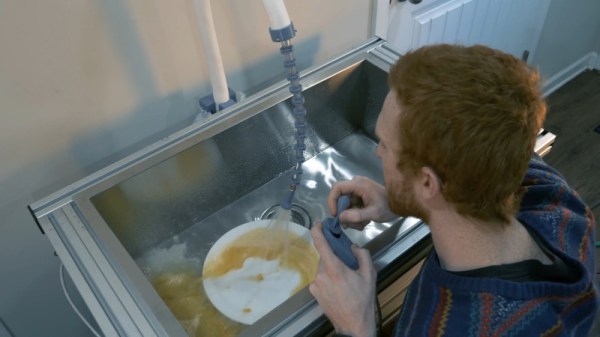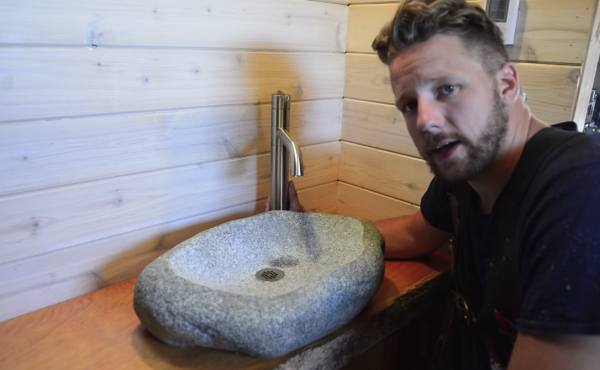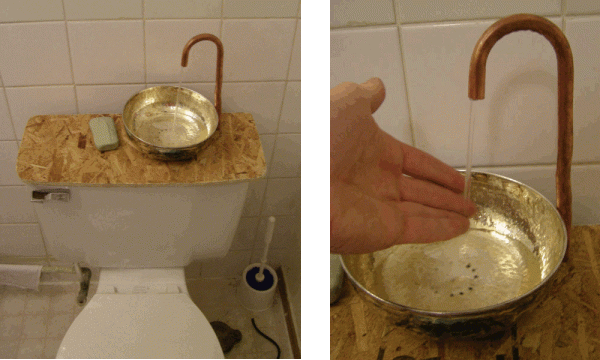The humble kitchen sink has remained relatively unchanged over the last century. While there are now fancier mixing taps and sleeker fittings available, for most of us, there’s a nozzle that squirts water of varying temperature, and a tub in which to soak dishes. Of course, this leaves plenty of room for improvement, as [Jake] found with his robot sink build.
The sink consists of a robotic nozzle, which he refers to as a “continuum manipulator”. In essence, it’s a nozzle that can be steered with a joystick to aim the flow of water throughout the sink. To move the nozzle, motors pull on steel cables attached to 3D printed collars fastened around the hose. Combined with an on/off switch for the water flow, the sink could be a useful assistive technology for those with disabilities, as demonstrated in the project’s demo video.
We could easily imagine such hardware being combined with a simple computer vision system to further automate the cleaning of dishes. The project actually serves as a proof of concept for work [Jake] is doing to explore 3D printing concrete with similar hardware, albeit scaled up to a more industrial level. We’ve featured similar technology before, too — in the form of a DIY tentacle build that’s perfect for Halloween. Video after the break.

















